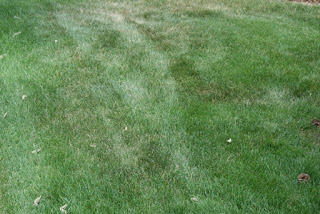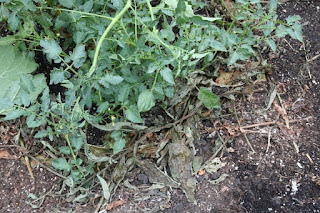Calcium is one of the essential elements needed to grow tomatoes. It’s responsible for fruit cell development and if the supply of Calcium is interrupted, the result shows up at the tips of the fruit, the end opposite of the stem.
This is called the blossom end and the dark spots forming at the end of your tomato is called Blossom End Rot. While there is no cure for fruit with Blossom End Rot, there are ways to reduce its effects and increase yields of good tomatoes, plant by plant. The most common cause of Blossom End Rot can be traced to uneven watering. It’s important to maintain a consistent level of soil moisture throughout the growing season.
Get in the habit of watering slowly at the base of the tomato plant, long enough to get the soil soaked 6” deep. Stick your finger in the ground and see how wet it is. Or buy a moisture meter.
Another way to help maintain moisture levels is to mulch your plants with products such as Soil Pep. Produced in Colorado, Soil Pep helps retain moisture, reduces weeds and can be used as a soil amendment in the fall. Reducing weeds with mulch is important because you won’t need to cultivate around your plants. Cultivating or pulling weeds can damage root systems, which in turn can interrupt water and nutrient flow.
Foliar applications can be used to correct Calcium deficiencies. These are available as Ready-To-Use sprays or you can purchase a concentrate and mix your own. This should be done on a weekly basis, thoroughly covering the foliage and fruit.
Calcium can also be added to the soil during the growing season. This box of Down To Earth contains small, medium and large particles of oyster shells, which will provide a sustained release of Calcium. Pull back the mulch around your plant, apply an even layer of Oyster Shell, water in and put the mulch back in place. This way the root system won’t get disturbed. Using these methods, you should be able improve your tomato yields this season. Peppers, squash and cucumbers are susceptible to Blossom End Rot. Good watering habits and Calcium supplements will improve yields on these vegetables as well.






























